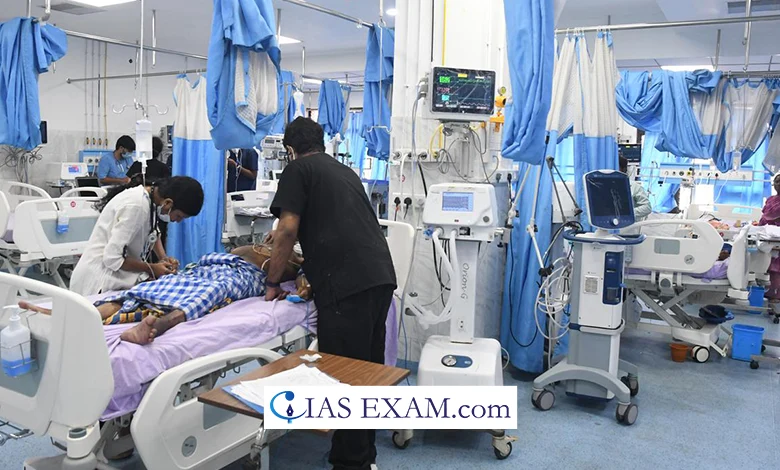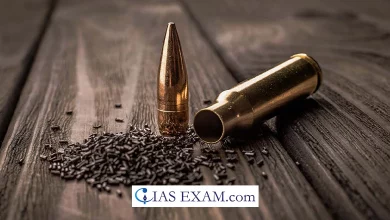Tamil Nadu’s Affordable Rodenticide Poisoning Treatment
Syllabus: Health [GS Paper-2]

Context
Rodenticide poisoning, particularly from yellow phosphorus-containing rat poison, poses a significant health threat in Tamil Nadu. However, innovative treatment methods have emerged, offering hope and saving lives.
Urgent Need for Effective Treatment
- Rodenticide poisoning, especially from yellow phosphorus-containing rat poison, has resulted in numerous cases of acute liver toxicity and fatalities across Tamil Nadu.
- A survey conducted by the Tamil Nadu chapter of the Indian Society of Gastroenterology revealed alarming statistics, with hundreds of individuals suffering from liver toxicity due to rat poison ingestion.
Advent of Plasma Exchange Treatment
- To address the acute shortage of the effective treatment with reference to the confounding factor, the group of the scientists working at the CMC Vellore introduced plasma exchange treatment for rodenticide-induced acute liver injury at the laboratory in rats.
- A survey conducted by the Tamil Nadu chapter of the Indian Society of Gastroenterology revealed alarming statistics, with hundreds of individuals suffering from liver toxicity due to rat poison ingestion.
Government Intervention and Expansion
- The Tamil Nadu Government after being enamoured by the accomplished outcome from the plasma exchange therapy, introduced the latter in six government hospitals in the state which were implemented through the Tamil Nadu Accident and Emergency Care Initiative of the National Health Mission.
- The project has seen gradual but steady growth and is now operating in 17 government hospitals. Of the state covering 15 districts in TamilNadu, this enabled timely and effective aid to victims of rodenticide poisoning.
About The Plasma Exchange Treatment
-
- Plasma Exchange Treatment, also being called therapeutic plasma exchange (TPE) or plasmapheresis, is a medical operation that involves taking the plasma portion of blood and substituting it with a different one.
- For this therapy, patients suffering from different medical conditions that involve pathogenic antibodies or toxins as the disease culprit are treated.
- Understanding Plasma Exchange Treatment
- Plasma is the liquid component of blood that carries blood cells and other substances throughout the body.
- In plasma exchange treatment, blood is drawn from the patient and processed through a machine that separates the plasma from the rest of the blood components.
- Life-saving substances from the plasma obtained during the treatment process are redirected to the donor, whereas the plasma containing the unwanted substances is then discarded.
- The rest of the blood cells are combined with a substitute solution either plasma substitute or albumin solution, and this is given to the patient’s body.
Clinical Outcomes
- Improved Survival Rates
-
-
- Plasma exchange was applied consistently from early initiation of treatment up to the current time, with the result that the 3 months survival rate of patients suffering from hepatic injury caused by exposure to rodenticide has substantially increased.
- The out click the links below for content that follows CMC Vellore conducted retrospective analyses show stunning life yet not only in paediatric patients but also in adults undergoing plasma exchange.
-
- Cost-Effectiveness and Accessibility
- In contrast to liver transplant, which is not available in most cases, the plasma exchange has the advantage of cheapness and wider accessibility for the patients.
- A primary benefit of using voluntary blood donors for the replacement of plasma is the diminution of costs of treatment. Consequently, the therapy is available to the economy stricken segment of the population.
Future Perspectives and Continued Innovation
- Addressing Treatment Gaps:
-
-
- In addition to tangible achievements, some issues have also to be overcome to enable plasma exchange treatment to be more readily available for patients with rodenticide poisoning.
- Further work must go into removing obstacles to the patients’ turn to treatment and that involves lack of money as well as logistical difficulties.
-
- Research and Development:
- Future studies targeting to increase the effectiveness and availability of the plasma exchange strategy for rodenticide poisoning in humans are ongoing.
- Collaborative work between healthcare team members, researchers and policy makers, is of great importance for faster innovation and attainment of that cherished goal of the patient outcomes.
Conclusion
Tamil Nadu’s adoption of plasma exchange treatment for rodenticide poisoning marks a significant milestone in public health intervention. By leveraging innovative treatment methods, the state has transformed the landscape of rodenticide poisoning management, offering hope and saving lives. Continued investment in research, infrastructure, and healthcare delivery systems will be crucial in sustaining these advancements and ensuring equitable access to life-saving treatment for all affected individuals.
Source: The Hindu
UPSC Prelims Practice Question
Q. Which innovative treatment method has Tamil Nadu implemented to combat rodenticide poisoning, particularly from yellow phosphorus-containing rat poison?
a) Dialysis
b) Liver Transplantation
c) Plasma Exchange
d) Antibiotic Therapy
Ans: “c”





.png)



